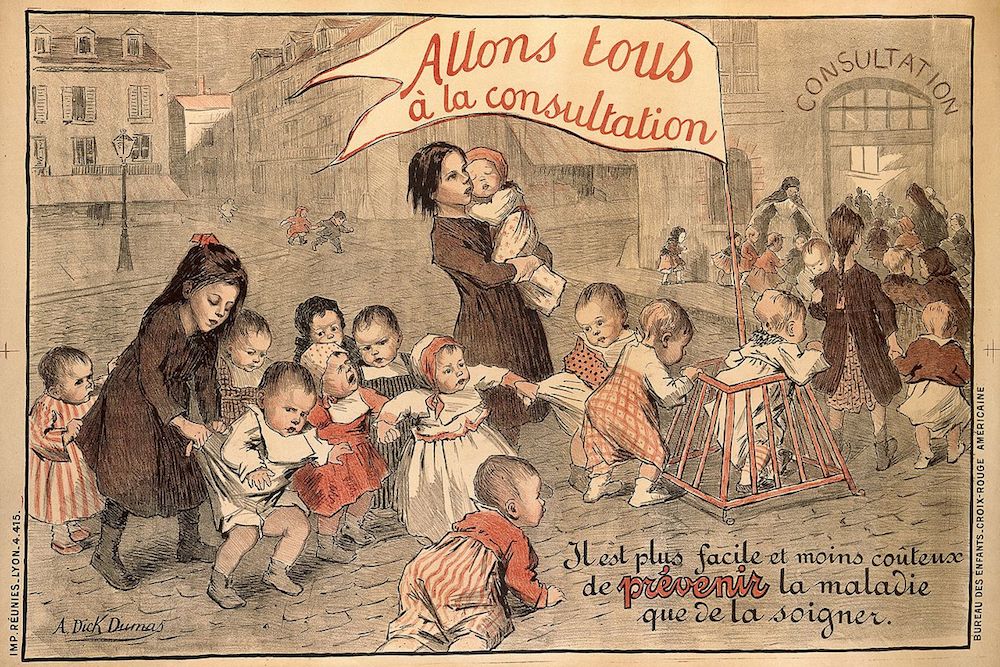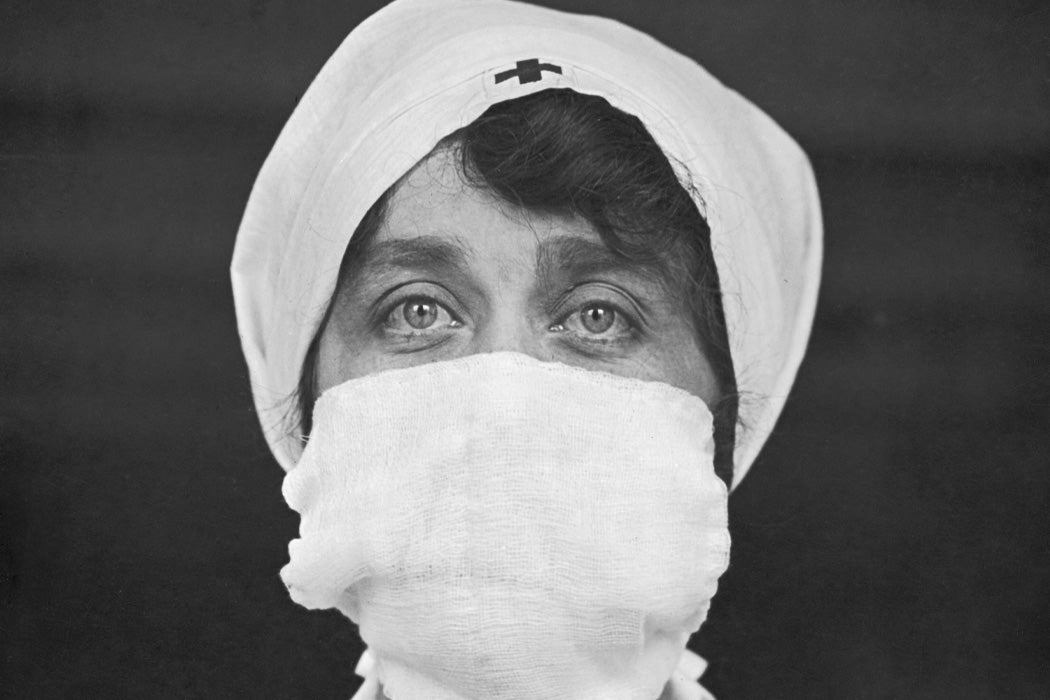
A lithograph by Alice Dick Dumas depicts children going to a clinic for a health check to prevent the advance of disease. Courtesy of Wikimedia Commons.
At the end of the 19th century, one in seven people around the world had died of tuberculosis, and the disease ranked as the third leading cause of death in the United States. While physicians had begun to accept German physician Robert Koch’s scientific confirmation that TB was caused by bacteria, this understanding was slow to catch on among the general public, and most people gave little attention to the behaviors that contributed to disease transmission. They didn’t understand that things they did could make them sick. In his book, Pulmonary Tuberculosis: Its Modern Prophylaxis and the Treatment in Special Institutions and at Home, S. Adolphus Knopf, an early TB specialist who practiced medicine in New York, wrote that he had once observed several of his patients sipping from the same glass as other passengers on a train, even as “they coughed and expectorated a good deal.” It was common for family members, or even strangers, to share a drinking cup.
So begins Katherine A. Foss’s concise and insightful essay on how some past epidemics have reshaped modern society. You may read her entire Zocalo essay here.






